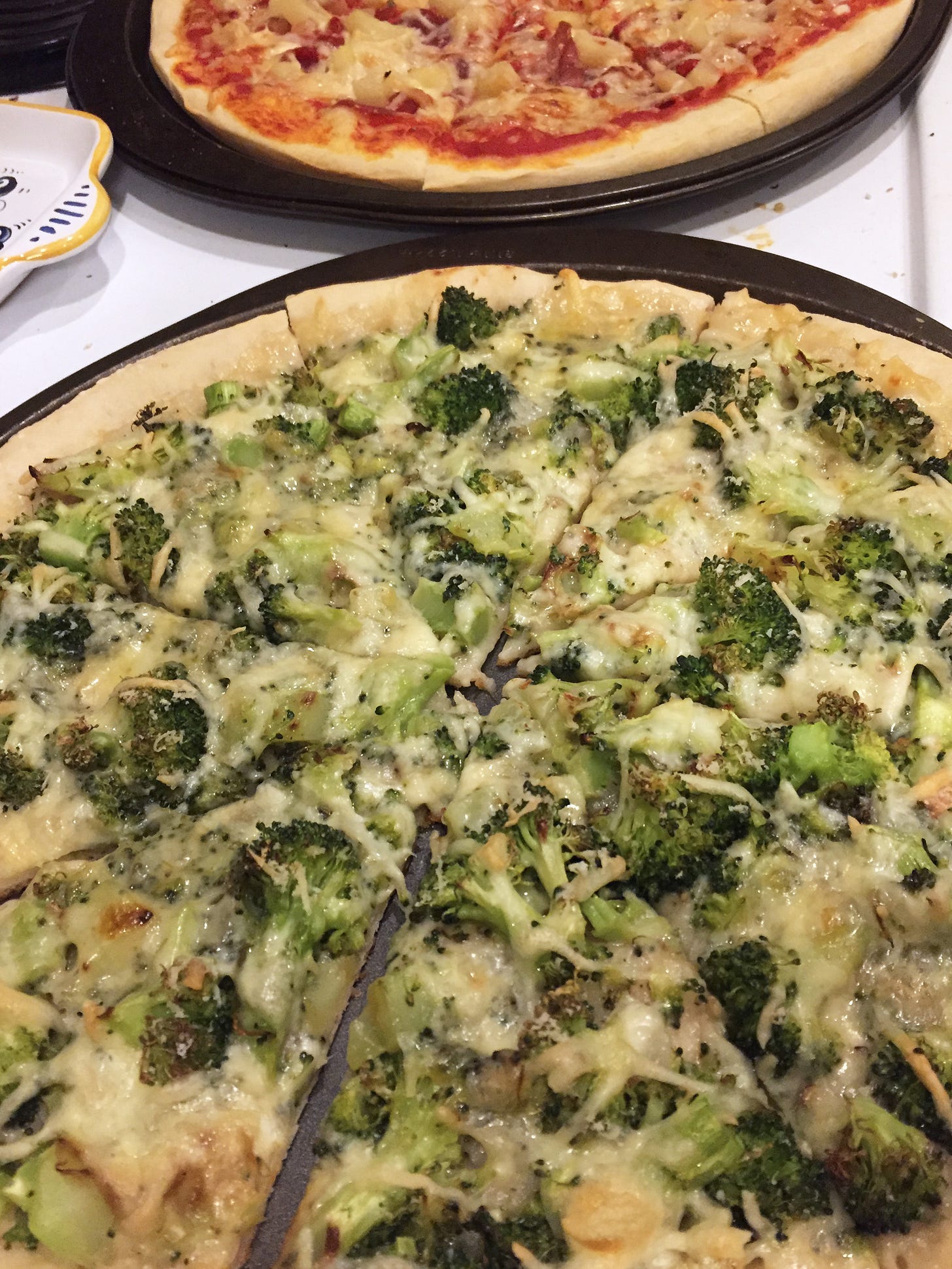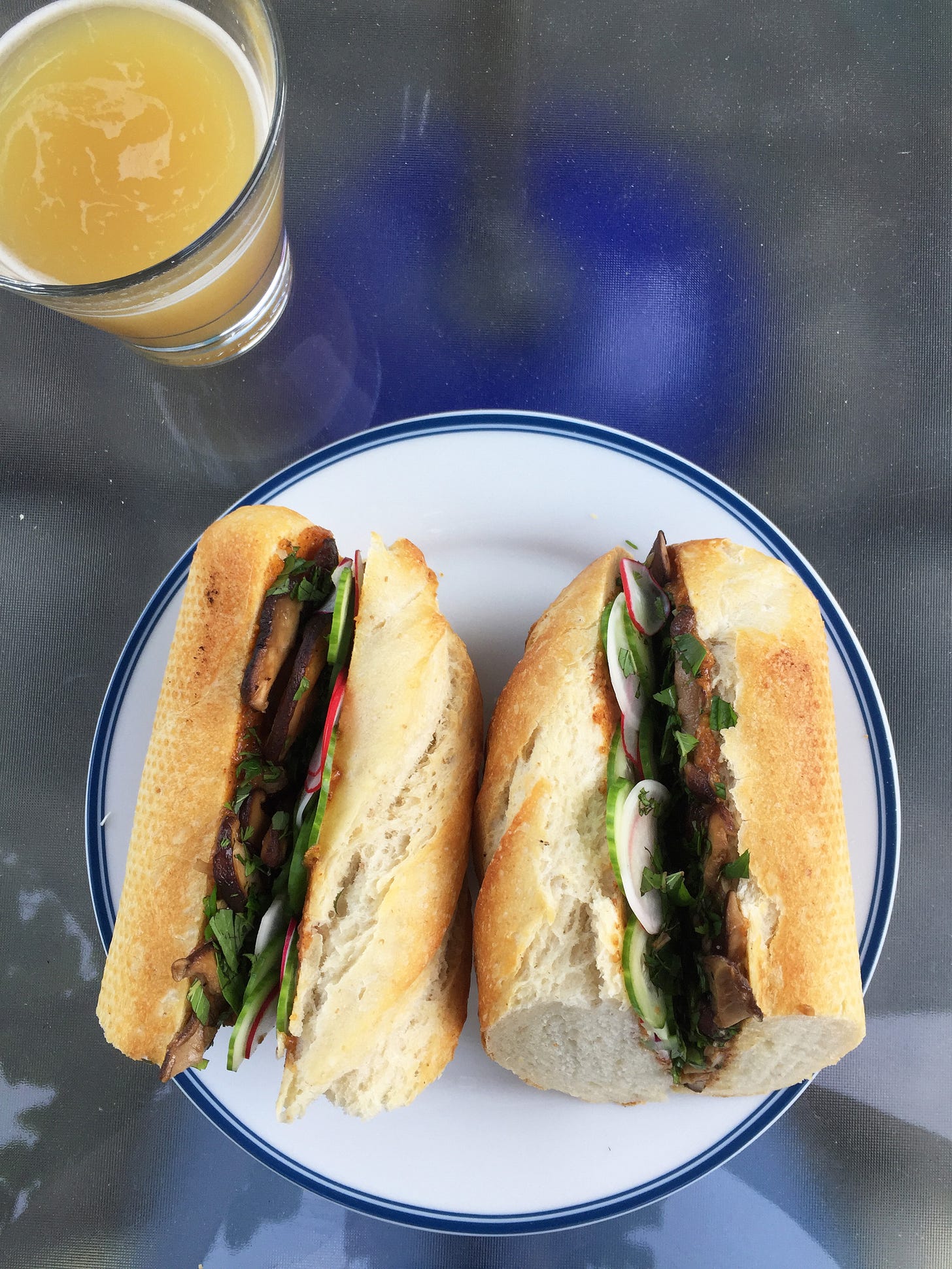Honk if you’re excited for the heat wave to break this weekend. It’s amazing how temperatures above 25°C completely fry my desire to do anything except sit in the shade with a sweaty glass of beer, knitting or reading novels. Sadly, life’s many responsibilities continue to get in the way. But at least I’ve had a chance to wear some of my summer pants and shirts (I’m currently about halfway through knitting a linen tank top which I’m excited about).
It’s also Pride month, which has always felt a bit odd in Vancouver since our actual event is in August (presumably due to our consistent Juneuary weather). But I have been loving watching the pushback against the corporatization of Pride get fiercer and fiercer. I hope that’s a sign that our communities have not forgotten what Pride is about: fighting for your right to be your queerest self without respectability politics getting in the way of your safety. We don’t want rainbow versions of branded shit, we want freedom, care, and respect (and ok, maybe a discount on candles, if you insist). Happy Pride to my fellow queers, and don’t let anyone tell you you’re too much, or not enough.
Jeff is notorious for passing the buck when it comes to making trivial decisions, but particularly when it comes to food, because he likes almost everything. “Do you want to do pizza tonight, or the chickpea thing?” “Whichever!” “Should we have the beet burger patties, or the Beyonds?” “Either sounds good.” I choose to believe this tendency is because he’s a Gemini. At any rate, I knew I wouldn’t be able to get him to pick a kind of cake he wanted for his birthday. Instead, I just went for something straightforward and with fruit in it, which is nearly always enjoyable (and great for me when I don’t feel like making something that involves multiple components prepared over several days). This strawberry spoon cake (similar version paywall-free here) had been sitting in my saved recipes, patiently waiting for strawberry season.
The recipe is so named because the cake is so soft, it’s best to scoop it out of the pan with a spoon (definitely not one to attempt to transfer onto a cake plate). I’d mark the texture as more similar to bread pudding than a traditional party cake. Because it doesn’t have eggs, it was easy to make vegan— we’re low on butter and don’t usually keep dairy milk in the house— I used Earth Balance and oat milk. I thought the cake batter seemed a little too basic, so I added some lemon zest and vanilla to complement the strawberries. I also think you could comfortably use up to twice as much as the 5 ounces of berries called for in the recipe, or sub with another fruit if you want.
This cake was notable for using brown sugar, common in cobblers and cookies, whereas white sugar is usually used for cakes. Macerating the strawberries in brown sugar creates a delightful, dark syrup that floods the top of the cake and caramelizes around the edges and bottom of the pan. I used a 10” cast iron which resulted in a slightly thinner cake, but more caramelization. Despite what the recipe tells you, I don’t think it’s absolutely necessary to have it with ice cream, but I happened to have a jar of honey chamomile from Earnest, and it was perfect.
Since the closure of Love at First Bite on Granville in the late 2000s, one of the last remaining dollar slices in Vancouver, it exists in a liminal space in my mind. I’ll forget about it for months, or years, and then suddenly be consumed with the desire to be eating one of their crispy, greasy slices off a paper plate in that dim, long hallway of a restaurant across the street from the Commodore. The place has achieved mythical status for me, being both much better and much more important in my memories than it likely was in reality— the below photo from 2007 is the only evidence I can find that it even existed.
So, the past ten-ish years have been one long quest to replicate their legendary broccoli cheese pizza. I’ve come reasonably close before, but nothing can quite satisfy in the same way as that thin crust covered in white sauce and tiny broccoli rubble, the coating of mozzarella cheese flecked with bits of orange cheddar (preferably eaten after 10pm with your ears ringing). The best results come from using store-bought alfredo sauce and grocery store cheese, absolutely nothing fancy. In that respect, this broccoli pizza from Smitten Kitchen is not similar at all. But I was craving a broccoli pizza and this is a delicious version in its own right: easy-to-make bechamel, three types of cheese, and bits of broccoli brightened up with lemon and pepper.
I didn’t have provolone so I used aged havarti, which didn’t quite get as brown and bubbly in the oven, but was still nice mixed with the pecorino and mozza. I’ve recently finally started cooking pizzas at 500° and it vastly improves the crust texture and moisture retention— if you’re still doing them at 450° or below, don’t be afraid! While getting toppings ready for the other pizza and making the sauce, I par-roasted the broccoli because I just think roasted vegetables taste better, but blanched or braised as in the recipe is also good, especially if you want to keep the moisture level up. I’m thankful to this pizza for being supremely tasty and easy to make, even if it did send me into a week-long nostalgia spiral.
We’ve been trying to use up the garden radishes this week before they get too big (the ants have already gotten a few) so that we can seed them again. I made another Isa Does It favourite, shiitake bánh mì (the recipe isn’t online, but there’s a salad version on her website). Bánh mì was borne of the French colonization of Vietnam, but that’s really the only bad thing you can say about it. I had a friend who, after trying it at a lunch counter for the first time, said, “I wouldn’t normally describe a sandwich as mind-blowing, but this is not a normal sandwich.” Traditionally bánh mì is made with sausage or sliced meat topped with quick pickles and herbs, and the mushrooms here do the work of providing a meaty, satisfying filling.
The first thing I will say about this recipe is that I definitely think you should use more than the half pound of mushrooms the recipe calls for for two half-baguettes: I use close to a pound and still sometimes find myself thinking it could have used a few more mushrooms. The spread, a sort of paste made of almond butter, sriracha, vinegar, and sesame oil is sort of weird on its own, but works perfectly with the other sandwich elements. Making the quick pickled radish and cucumber is one of those times I wonder how I could have lived without a mandoline (answer: it was because I wasn’t very good at cooking at the time). And I don’t know if mint is commonly used, but I really love it in savoury dishes and it’s so nice here with the saltiness of the mushrooms. I made this on sourdough baguette from Cobs, which meant I basically had to unhinge my jaw to eat it, but it was worth it.
Also this week I made a pretty good yaki soba using the last of the red cabbage, some broccoli, and brown mushrooms with spaghetti. You can use Italian noodles to make Asian-inspired dishes! It’s not illegal! And I made the glorious lemon asparagus orzo again and added some crumbled fried capocollo on top, which maybe is salt overkill, but only God can judge me.

Media:
I found this piece by Alexis Nikole Nelson on foraging while Black enlightening. In many parts of the US, foraging in public areas is still considered a civil offence, and trespassing is considered a criminal offence, owing to laws enacted around the time of emancipation which were meant to create another barrier for free Black folks trying to make their own livelihoods. That this also hurt Indigenous communities was presumably a fun bonus aspect for white colonists, who didn’t mind that it also hurt poor white people, because it accomplished the goal of helping prevent racialized people from prospering.
The fact that foraging is now becoming an interesting and fun part of many people’s goal of becoming more local or sustainable in terms of their diet is part of modern gentrification: taking something that has always been part of other cultures’ or the working class’s way of surviving, and marketing it as good now that now middle-class white people want to do it. So it’s no surprise that the Black communities who were robbed of the opportunity to use their foraging knowledge in the first place now feel uneasy about returning to it. And some of that knowledge has been lost, because racist laws and social injustices prevented it from being passed down through generations of practical use:
“The cherry on top of why I think we see so few Black folks in the outdoors period, not even just in the foraging space, is in the ’50s and ’60s. It was dangerous to be a person of color by yourself in these spaces that our population was dominated by white people. […] It makes sense that now it has been culturally ingrained in us for multiple generations now to stay away from some of these spaces, because your great-grandparents were staying away from those spaces.”
Thanks for reading— if you enjoyed this newsletter, please share it with someone new! I like providing this to you for free, but it does still involve time and effort. This week I encourage you if you’re a settler and you can spare it, to please donate to the Indian Residential School Survivors Society or the National Centre for Truth and Reconciliation. If you’re Indigenous, please click here for a moment of joy (make sure your sound is on).








